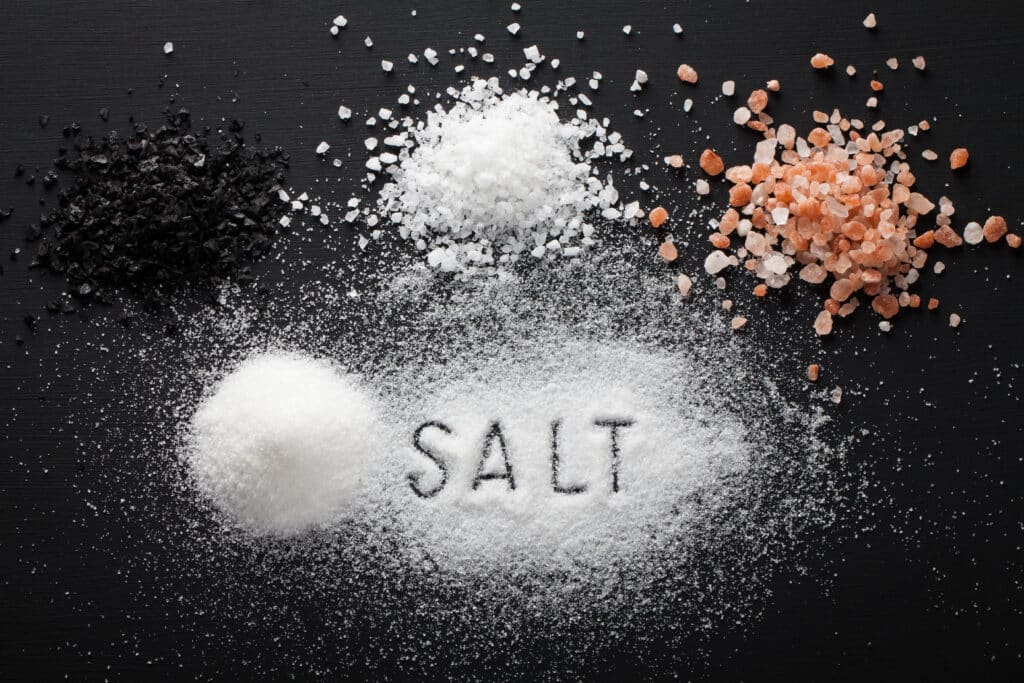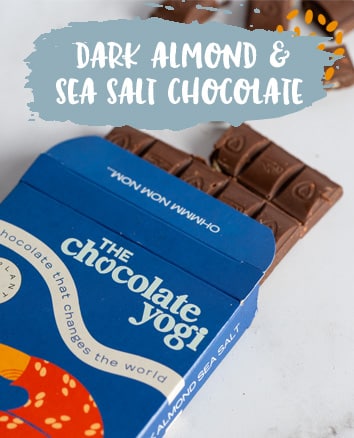
For those who frequent organic food shops, the decision between Celtic Salt, Atlantic Sea Salt, Himalayan Salt, Kalahari Salt and Table Salt extends beyond mere seasoning. This choice reflects a commitment to holistic well-being and ethical consumption.
We at Organic Choice aim to provide insights that enable informed choices, aligning your culinary desires with your journey in organic living.
Celtic Sea Salt: What is everyone saying?
Thanks to Barbara O’Neill, there has been a considerable spike in the Celtic Sea Salt trend on platforms such as TikTok. O’Neill gained a lot of support for her input on the significance of Celtic Salt Water.
Her emphasis is on the following:
- Water and salt are crucial for health.
- Hydration is essential to keep the body healthy and energised, and proper sodium intake is necessary for glucose absorption.
- Dehydration can cause high blood pressure and decreased nutrient absorption. Water therapy and Celtic salt can help hydrate the body and improve health.
- Sea water has a similar mineral balance to blood and can improve circulation and waste elimination.
- Celtic salt, with 82 minerals, is closer to the natural composition of seawater.
- Drinking three litres of water a day can relieve pain and improve health.
The trend sees users place Celtic Sea Salt under/on their tongues and drink a glass of water. O’Neill says that putting salt directly on the tongue improves absorption and hydration due to its magnesium content.
Unpacking the Differences Between Salt Types
Rock Salt and Sea Salt are two types of salt that differ in their origin, texture, and mineral content.
Both types of salt have unique uses and properties, and it’s essential to understand the differences between them to choose the right type of salt for your needs.
Rock Salt
Rock Salt is mined from underground salt deposits found in regions such as the UK, Poland, and the United States is primarily composed of sodium chloride with fewer trace minerals. This type of salt typically originates from ancient dried-up sea beds and is harvested from large salt mines.
Renowned for its milder, saltier taste, rock salt often has a coarser, less refined texture. In addition, it finds its use in de-icing roads and preserving food and spa treatments for its therapeutic properties and water-softening systems.
Sea Salt
In contrast, Sea Salt is harvested from evaporated seawater in coastal regions, including the Mediterranean and the Atlantic coasts. It is known for its more complex flavour profile, infused with subtle mineral notes. The mineral richness, including sodium, potassium, magnesium, and calcium, stems from its marine source.
Sea salt’s textures range from fine to coarse, making it a versatile choice in culinary applications, where it is celebrated for enhancing the flavour and texture of dishes and is a preferred ingredient for gourmet cooking.
Mineral Differences
Different salts like Celtic Sea Salt, Atlantic Sea Salt, Himalayan Salt, Kalahari Salt, and Table Salt boast varied mineral compositions.
To illustrate these differences, we’ve included a chart below. This table provides a visual overview of each type’s mineral content, making it easier to comprehend and compare:
| Mineral | Celtic Salt | Atlantic Sea Salt | Himalayan Salt | Kalahari Salt | Table Salt |
| mg/100g | mg/100g | mg/100g | mg/100g | mg/100g | |
| Sodium (Na) | 37,200 mg | 40,600 mg | 39,400 mg | Varies by region | 39,300 mg |
| Chloride (Cl) | 53,000 mg | Varies by region | 59,300 mg | Varies by region | 60,300 mg |
| Magnesium (Mg) | 698,00 mg | Varies by region | 105 mg | Varies by region | Trace |
| Calcium (Ca) | 223 mg | 190 mg | 241 mg | Varies by region | 120 mg |
| Potassium (K) | 231 mg | 56.60 mg | 268 mg | Varies by region | Trace |
| Sulfur (S) | 600 mg | Varies by region | 590 mg | Varies by region | Trace |
| Phosphorus (P) | 270 mg | Varies by region | 560 mg | Varies by region | Trace |
| Iodine (I) | Varies (trace) | Varies (trace) | Varies (trace) | Varies by region | Typically added (trace) |
| Iron (Fe) | <5 mg | Varies (trace) | <5 mg | Varies by region | Trace |
| Zinc (Zn) | <1 mg | Varies (trace) | <1 mg | Varies by region | Trace |
| Copper (Cu) | <2 mg | <2 mg | <2 mg | Varies by region | Trace |
| Manganese (Mn) | Trace | Varies (trace) | 0.1 mg | Varies by region | Trace |
Please note that for Kalahari Salt, as with Atlantic Sea Salt, the mineral composition can vary based on the specific region where it is harvested. The values provided for Kalahari Salt are approximate averages and can differ depending on the source. The mineral content in table salt may also vary based on the brand and whether it is iodised or not.
Celtic Salt
Salt Type: Sea
Origins and Geography: Also known as Sel Gris or grey salt, Celtic sea salt is traditionally harvested in the coastal regions of Brittany, France, particularly from the Guérande salt marshes. These marshes are situated along the Atlantic Ocean, where the sea’s influence is crucial in the salt’s formation.
Mineral Composition and Health Benefits: Celtic sea salt is rich in minerals like magnesium, calcium, potassium, iodine, and zinc, and its grey colour comes from minerals absorbed from the clay lining of salt ponds. These minerals provide essential nutrients often lacking in modern diets and support overall health.
Harvesting and Processing:
- Seawater is channelled into shallow clay ponds and allowed to evaporate naturally under the sun and wind.
- Celtic sea salt is hand-raked and hand-harvested by skilled workers.
- It retains moisture from the ponds’ clay lining, contributing to its distinctive grey colour and mineral-rich composition.
- This traditional approach results in a coarse, moist salt with a unique flavour profile due to its mineral content and the clay it comes into contact with during harvesting.
Culinary and Flavour Profiles:
- Celtic sea salt has a mild, briny flavour with subtle mineral notes due to its rich mineral content. It enhances the natural flavours of ingredients without overpowering them.
- It is ideal for adding a finishing touch to dishes, as its coarse texture provides a delightful crunch. Use it to top off fresh salads, grilled meats, and roasted vegetables.
The end product: Celtic Sea Salt
Atlantic Salt
Salt Type: Sea
Origins and Geography: Atlantic Sea Salt is harvested from various coastal regions worldwide, including the Atlantic Ocean, the Mediterranean Sea, and other seas adjacent to different continents. Its characteristics can vary depending on the specific coastal region where it’s collected.
Mineral Composition and Health Benefits: The mineral content in Atlantic Salt varies by region and typically includes sodium, chloride, magnesium, and trace elements in seawater. While less diverse than other salts, it’s still a healthier option than processed table salt.
Harvesting and Processing
- Seawater is collected in salt pans, and the sun and wind facilitate the natural evaporation.
- It is typically processed through mechanical evaporation or minimal heat treatment to remove excess water.
- Some variations may undergo minimal refinement, while others are processed to a fine-grain size.
- The characteristics of Atlantic Sea Salt can vary widely depending on the specific coastal region of origin.
Culinary and Flavour Profiles:
- The flavour of Atlantic Sea Salt varies, but it generally offers a clean, oceanic taste with a hint of brininess. It can range from subtle to more pronounced in flavour. Atlantic Sea Salt is available in various grain sizes, from fine to coarse.
- The choice of texture can influence its applications. Make use of fine Atlantic Salt for baking and general seasoning and coarse Atlantic Salt for grilling, seasoning meat before cooking, and rimming cocktail glasses.
The end product: Atlantic Sea Salt
Himalayan Salt
Salt Type: Rock
Origins and Geography: Often called Pink Salt, Himalayan Salt is extracted from the Khewra Salt Mine in the Punjab region of Pakistan, near the Himalayan mountain range. The salt formed in this region millions of years ago when ancient oceans dried up.
Mineral Composition and Health Benefits: Himalayan salt is pink due to iron oxide and contains sodium, chloride, magnesium, potassium, calcium, and trace minerals like iron, zinc, and manganese. It’s praised for its trace minerals that can improve overall health and hydration, prevent muscle cramps, and balance pH levels in the body.
Harvesting and Processing:
- Himalayan Salt is mined from underground salt deposits and is extracted using traditional mining techniques.
- After extraction, Himalayan Salt is hand-crushed, washed, and sometimes stone-ground to produce different grain sizes, from fine to coarse.
- It is not subjected to extensive processing or chemical treatments.
- The pink colour and rich mineral content of Himalayan Salt come from the ancient seabed where it formed millions of years ago. It is considered one of the purest forms of salt and is often used in culinary and decorative applications.
Culinary and Flavour Profiles:
- Himalayan Salt imparts a mild, subtle saltiness with a hint of mineral complexity. It is less salty than table salt, allowing the ingredients’ natural flavours to shine. It is available in various grain sizes, from fine to coarse, as the texture can vary. Its granulated form is excellent for enhancing the presentation of dishes.
- It is versatile and can be used for cooking, grilling, and seasoning. Try it as a cooking surface for grilling or as a serving platter for dishes like sushi or sashimi.
The end product: Himalayan Salt
Kalahari Salt
Salt Type: Rock
Origins and Geography: Kalahari Salt is sourced from the arid and ancient Kalahari Desert in southern Africa, a region known for its unique and pristine salt pans. This remote desert landscape, with its mineral-rich soil and pristine conditions, contributes to the distinct qualities of Kalahari Salt.
Mineral Composition and Health Benefits: Renowned for its exceptional mineral richness, Kalahari Salt contains essential minerals like sodium, potassium, magnesium, and calcium. Unlike heavily processed table salt, Kalahari Salt retains these vital nutrients, making it a healthier choice for culinary use.
Harvesting and Processing
- Kalahari Salt is harvested through a traditional and sustainable method known as solar evaporation.
- Seawater from underground aquifers slowly rises to the surface and naturally evaporates by the sun and wind.
- This process ensures minimal environmental impact and helps preserve the unique mineral composition of Kalahari Salt.
Culinary and Flavour Profiles:
- Kalahari Salt boasts a distinct and well-rounded flavour profile, often described as subtly earthy and slightly sweet, with a delicate hint of mineral complexity.
- Its fine texture makes it versatile for various culinary applications, including seasoning, baking, and finishing dishes.
The end product: Kalahari Salt
Table Salt
Salt Type: Sea or Rock
Origins and Geography: Table Salt is typically derived from salt mines or obtained through the evaporation of seawater in various parts of the world. It lacks the natural minerals found in the other salts and may not retain the same regional characteristics.
Mineral Composition and Health Benefits: Refined to remove impurities, Table Salt primarily contains sodium, chloride, and iodine. However, it lacks the diverse range of minerals found in other salts. Consuming excessive sodium can lead to health issues such as high blood pressure.
Harvesting and Processing:
- Most table salt is derived from mining salt deposits through drilling and blasting.
- Table Salt is heavily processed to remove impurities and minerals. It undergoes chemical treatments to bleach and prevent caking.
- In some cases, to avoid iodine deficiency, they add iodine.
- The extensive processing of table salt results in refined, uniform grains. It is primarily composed of sodium chloride, often with added iodine.
Culinary and Flavour Profiles
- Table Salt has a clean, sharp saltiness but lacks the complexity and subtlety of other salts due to its extensive processing and the removal of minerals. Due to this, it is finely ground and pours easily, which makes it often preferred for its uniform texture.
- It is often used for everyday seasoning during cooking, baking, and in recipes where precise measurements are essential. It dissolves quickly and is suitable for brining, pickling, and seasoning sauces, soups, and stews.
The end product: Table Salt
Health Considerations
Consuming salt moderately is crucial for good health, whereas excessive salt intake, irrespective of its type, can lead to high blood pressure, heart disease, and other health issues. While each type of salt provides a unique mineral profile, focusing on a balanced diet rich in whole foods to meet your mineral needs is more important than relying solely on salt.
Your Organic Choice
By providing this information, we hope to empower our customers to decide what suits their needs and preferences best. This approach ensures that you can make an informed decision and select a salt type that will not only enhance the flavour of your food but also cater to your dietary and health requirements.
To explore our diverse product range, browse our website or come and visit us in-store. We are happy to be a part of your organic journey.








